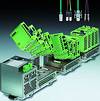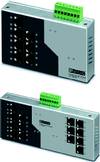

A great amount of intellectual energy is currently being expended in an attempt to pave the way for a seamless, bloodless convergence of IT and factory floor/mining automation systems.
Apart from the daunting task of meshing the various software systems, little attention is being given to the very basic integration of all those `legacy' automation systems onto an `Open' platform. Getting all the systems onto such a platform will at least allow some universal `glue' to be applied that would enable the convergence of most, if not all, the automation systems' `supervisory and control functions' with `enterprise IT systems'.
The glue
An early battle took place between the inventors and purveyors of Token Ring, FDDI, ATM and Ethernet to become the universal glue. Ethernet won the fight and has since become the de facto data communication connectivity platform for the information technology - as well as the industrial control and instrumentation or 'plant floor' world.
Proof of this fact is that virtually all PLC manufacturers are adding Ethernet communication modules or Ethernet ports to their products. Manufacturers of industrial automation devices are scrambling to announce their industrial Ethernet products including Ethernet enabled I/O systems, established IT box vendors are announcing industrial Ethernet versions, etc.

Why Ethernet won
One of Ethernet's most appealing aspects is the simplicity of inter-connecting Ethernet devices. It requires any combination of copper cables (2 or 4 twisted pairs), a pair of fibre-optic cable cores (single- or multimode or even polymer fibres) or wireless Ethernet transceivers. It further requires some simple and/or elaborated Ethernet switches with different ports to accommodate the various connection media, some IP addresses and voila - an up and working Ethernet system that should readily plug straight into the Enterprise IT network.
Is it that simple? Yes, no or almost? Actually the answer is 'All three'.
Yes
The rules for establishing an Ethernet network are very well documented, easy to understand and simple to apply. By both parties rigorously adhering to the rules, the scenario above should fly first time around. (The Herculean task of software integration is being ignored since it is not part of this discussion.)
No
When a vendor from either side cheats with the rules the two sides will no longer be compatible. The cheating may be very obvious... One side includes a modified, adapted version of the Ethernet protocol. Or it may be very subtle... The omission of a standard feature such as IGMP snooping on the factory floor switch and having the IT side Web casting on the network. The factory floor side falls over under the volume of traffic, and there are some red faces.

Almost
We unfortunately live in an imperfect world. The way to ensure a successful merger at the connectivity level is to manage the entire integration process step by step with no cheating whatsoever allowed.
The Ethernet switches on the factory floor or in the mine must be fully compliant with all the current IEEE 802.1xxx specifications. These industrial Ethernet switches, gateways, media converters, PCs, etc, must be true 'hard hat' units rather than 'repackaged/re-badged' IT units. Here are some of the features that distinguish true industrial Ethernet products from their generally available IT components:
* Their power supplies must not be office type 'ball and chain' PSUs. Instead these devices must have dual 24 V d.c. power inputs with power fail alarm contacts.
* They should be mounted on DIN rails in the instrumentation and control cabinets while being powered from the cabinet's dual 24 V d.c. supplies.
* They must be capable of operations at extended temperatures.
* Often units will be mounted on or in the close proximity of moving and vibrating machines or structures. Therefore, specified resilience to shock and vibration is essential.
* These devices will sometimes be placed near to or on circuit breakers or arc welding machines or even arc furnaces. A specified degree of immunity to electrical interference is also essential.
* They must function without the need of cooling fans.
* In critical situations the manufacturer's MTBF numbers are essential to be able to establish the degree of redundancy necessary.
Most important, they must also be fully compatible with their IT counterparts. It must be possible to plug a set of fibre cables from a switch in the IT server room into the fibre ports of the industrial grade switch underground in a mine. The underground as well as server room switches should further be capable of being connected into an 802.1w Rapid Spanning Tree redundant network for the entire enterprise/factory integrated network.
Phoenix Contact offers a range of industrial Ethernet products ranging from panel PCs through soft PLCs, PLCs, I/Os and a range of low priced unmanaged Ethernet switches with various combinations of copper and MM fibre ports. The top of the line switch is the factory line modular managed switch expandable up to 24 ports capable of any combination of copper, polymer-multimode as well as single mode glass fibre cables. Industry standard SNMP software as well as all 802.1xxx features are standard with this product.
For more information contact Lore Holtzhausen, Phoenix Contact, 011 793 7121, [email protected], www.phoenixcontact.co.za
| Tel: | +27 11 801 8200 |
| Email: | [email protected] |
| www: | www.phoenixcontact.co.za |
| Articles: | More information and articles about Phoenix Contact |

© Technews Publishing (Pty) Ltd | All Rights Reserved